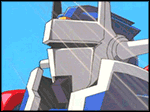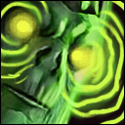|
Gamest Mook posted:Quakeworld has gotta be at least equivalent to the craziest fighting game (MvC2) in terms of "how far removed is this from the designer's vision". Smash Bros
|
|
|
|

|
| # ? Jun 6, 2024 10:24 |
|
Hypha posted:Why is this so though? What defines fighting games such that emergent gameplay is so frequent? Sandbox games I can understand due to granting players a greater degree of freedom but fighting games have set inputs and limits based on character abilities. It should be more limiting than it actually is in my mind and am wondering where this emergent order is coming from for the entire genre. Sure, the players can be a factor but it isn't like people are not as creative in other genres of games. I feel that player creativity across genres can be considered consistent, yet there is a higher emergent element in fighting games. I think in part it's just really hard to design a fighting game, everything is on a razor's edge with tiny differences in frame advantage or hitbox sizes making massive differences in the viability or uses of a move. In addition, this creates a situation where, if the designer makes a mistake, things can be radically powerful, because small differences are huge. In other games, letting a character cancel it's animation a certain way, like kara-canceling, would just go unnoticed because there isn't this intense pressure to improve in even the smallest ways. In a fighting game, the tiny range increase produced by a kara throw is significant enough to be an important addition to the game.
|
|
|
|
QW and TFC are the two FPS games that have the most unintended (yet extremely fun!) mechanics added in.
|
|
|
|
Hypha posted:Why is this so though? What defines fighting games such that emergent gameplay is so frequent? Sandbox games I can understand due to granting players a greater degree of freedom but fighting games have set inputs and limits based on character abilities. It should be more limiting than it actually is in my mind and am wondering where this emergent order is coming from for the entire genre. Sure, the players can be a factor but it isn't like people are not as creative in other genres of games. I feel that player creativity across genres can be considered consistent, yet there is a higher emergent element in fighting games. I think it is a mistake to assume that player creativity across genres would be a constant. While there may exist people who will go poke at every random seam in any given generic 3rd person shooter, doing so is a dramatic departure from normal gameplay and there is little incentive to do it; you have to go far out of your way and do boring things. In a fighting game, you are constantly exposed to a much larger percentage of the game. Levels are typically small and all the action (and consequently where you're probably going to find interesting bugs) is well concentrated. Part of it is also the way the communities work; an average, good fighting games have significantly longer average lifespans than most multiplayer games in other genres (though there are a few significant exceptions) so unless everyone decides to abandon the game when a new bug crops up, it almost has to be incorporated into play. Finally, as Periodiko discussed, small glitches are generally much more significant in fighting games than other genres. Combine all these things and bugs are more important, more likely to be discovered and shared widely, and more important for a community to adapt to.
|
|
|
|
Hypha posted:Why is this so though? What defines fighting games such that emergent gameplay is so frequent? Sandbox games I can understand due to granting players a greater degree of freedom but fighting games have set inputs and limits based on character abilities. It should be more limiting than it actually is in my mind and am wondering where this emergent order is coming from for the entire genre. Sure, the players can be a factor but it isn't like people are not as creative in other genres of games. I feel that player creativity across genres can be considered consistent, yet there is a higher emergent element in fighting games. RTSes don't have perfect information (if any information at all), so the emergence of the game is limited to whatever is safest. In a fighter, you can make risky moves which capitalize on your opponent's expectations of skill. If I make 10 firebats and then rush my opponent with them, he won't be wondering what the "purpose" of the firebats are because he doesn't see the big picture (rather, he will react as if I simply made a bad unit choice). If I jab jab at you with Akuma and I have a full bar, you think "oh poo poo Raging Demon attempt" and jump because you have the big picture (can see my positioning and resources aka meter). People watching that fight will be like "why did he jump" when they see you jump. Your choice to jump has more to do with another set of rules built on the game than the game itself, just as your choice to reversal srk on a Gief player when you normally wouldn't on other characters. That's emergent gameplay. The same would apply for resets, where you use psychological factors to increase ingame damage or improve positioning. There is also the fact that the rules aren't really that restrictive at all. Each move has startup frames, active frames, recovery frames, and clear restrictions on what they can cancel into (stronger normals, specials, supers, etc, rather than combos being a specific set of inputs like MK9). You can use those rules to formulate whatever you want, just like a sandbox game. Rufus LK xx HK leaves you with enough frame advantage to link into Space Opera Symphony, and that's emergent gameplay. Boxer headbutt leaves you with enough frame advantage to link into Violent Buffalo provided you charge U1 during the previous move-- the U1 input alone is emergent gameplay because you're taking advantage of the freedom of the back charge combined with up and down inputs. You have a lot more freedom in fighters than you do in most games. sponsz posted:Wasn't G22 in SC3?
|
|
|
|
It was especially impressive in the air : http://www.youtube.com/watch?v=pOVwSLnVhY0
|
|
|
|
Is there a way to hedge your bets to get more emergent phenomenon that enhance gameplay over introducing game-breaking and unfair elements? Is there a way to breakdown unintended mechanics such that you can understand how they contribute to the total "skillscape" of a given game? What stuff has lead more often to fun or more complex stuff rather than bullshit? I'm just wondering if you can design serendipity or control your degree of emergence when making a fighting game, if the emergent elements are what makes or breaks community acceptance. By players being consistent in creativity, I am saying that players that play fighting games are not significantly different in ability to other genres. There is no superiority or inferiority implied on any player base in ability to exploit, rather the incentive to do so. A fighting game player has more incentive to explore the game, which is different than saying that fighting game players are inheritedly more creative than X or Y. This explains why players benefit for searching for exploits and emergent stuff. The incentive part makes a lot of sense, so thanks Irony. Still, other genres don't rely on emergent phenomenon to be successful, while fighting game acceptance and love seems to point to the need for emergence. I've enjoyed many games for what they were, not what they became but for fighting games, what they become is a more pressing question. If emergence is so important, can a designer design towards it (without knowing exactly what will emerge)? I'm going from a biological perspective on emergence of traits and enhancing breeding for more beneficial traits to emerge in the test population. I keep wondering as I watch and learn about fighting games if these same perspectives can be extended to it. Can you "mutate" up a whole bunch of fighting game engines considering all the conventions, select for the best one and get a good game?
|
|
|
|
Hypha posted:Is there a way to hedge your bets to get more emergent phenomenon that enhance gameplay over introducing game-breaking and unfair elements? Is there a way to breakdown unintended mechanics such that you can understand how they contribute to the total "skillscape" of a given game? What stuff has lead more often to fun or more complex stuff rather than bullshit? I'm just wondering if you can design serendipity or control your degree of emergence when making a fighting game, if the emergent elements are what makes or breaks community acceptance. Well, it goes a few directions. First, if you reduce the ability for players to be creative in a game by muddying the rules or reducing their options, you reduce the enjoyment of that game (example: why we don't discuss MK9 in this thread nearly as much as other games). MvC3 started as a way to make a game with "maximum" emergence (totally free combo system with hitstun scaling mechanics) but fell flat because it included a few mechanics that reduce emergence (Wolverine's BnB kills everybody, Phoenix kills everybody, X-Factor kills everybody, invincible assists that work while in hitstun, there's no desire to use the majority of the freedom given). Skullgirls is a shining example of your initial question. The freedom of the SG combo system allows players to be creative, but the no-looping restriction cuts out the most frustrating factor of a free combo system. Even if a loop doesn't last forever, getting dusted by Sol players or getting H'd by Magneto players is neither enjoyable to receive nor exciting to watch. In addition, the system encourages creativity by requiring varied moves. By allowing creativity, I cannot guarantee a game's quality, but I can guarantee its longetivity. Nobody plays Power Rangers because there is only a single character who is playable and he has a single move that outclasses everything else he can do. This is the reason why Akuma is banned, as well. Generally, we want a game that feels rewarding and we can all get into. Increasing the lifespan of the game will do that. You don't see people proclaiming the glory of Warcraft 2 nowadays because Warcraft 2 wasn't the one that lasted 10 years. Fighters excel in this, but they're not alone in this. Starcraft is an obvious example. Music games are an example of the opposite, short of music games with a high difficulty curve (like IIDX). Nobody plays the intial DDR mixes because we've all played and beaten those songs. They're boring. The music games that are still around have a high ceiling and a still-increasing number of songs (like Rock Band DLC or the continuing IIDX releases). Pokémon is another example of a game that benefits from being highly emergent as a way to increase the lifespan of the product. A game doesn't have to be emergent to be good, but it does have to stick around for a while for the player base to grow enough to enjoy it. If you pick up Mortal Kombat 4, you won't have anybody to fight against. If you pick up Super Turbo, you will, which will allow you to actually play the game and enjoy it. Furthermore, players who have been playing since day 1 can still enjoy it because they are still getting new experiences out of the product. About "mutating" games together: It's possible, but it hasn't been attempted very often. Skullgirls and Jojo's Bizarre Adventure are 2 games that have taken this approach, and they are both amazing games. CvS2 is an attempt at doing so, but major gameplay problems caused the death of it (the life of the game was great, though).
|
|
|
|
It's not unique to fighting games. The best competetive games in literally every genre are the ones where bugs and unintended behavior improved on the depth of the base game.
|
|
|
|
Broken Loose posted:I think so, and I'm ready to be wrong about at least one part of this, but none of ST's exploits strike out as anything game-breaking or totally unintended by the designers save for Akuma. Yeah, this isn't really true. Just like most fighters, there are tons of glitches and techniques in ST that were almost certainly not "intended" but have just become an accepted part of the game. Examples include: Stored super for Chun and Honda Stored Ochio for Honda Stored Flipkick for Claw Ken's reversal air hurricane kick glitch Kara-chain cancelling rapid-fire light moves Option select grab loop for Hawk Option selects more complicated than 1-button throw I don't think stuff like SF4 Boxer headbutt into Ultra is "emergent gameplay" - that was clearly an intended mechanic by the designers, something they were well aware of and planned to happen. Stuff like option selects or long combos relying on specific positioning and 1-frame links often is, though.
|
|
|
|
Thwack! posted:Exactly. If, for some cosmic reason, that there is a scene that took this game seriously, the metagame will be nothing but Wheel Kicks and Baalllooooooon. There's actually 5 characters that are considered to be in the top tier in the game - Ray, Karnov, Lee, Zazie, and Jean. Nobody really agrees on their exact placement but it's pretty much accepted that they're all really good. Like, I pretty much always thought Ray was #1 but I'm not so sure about that any more, his combos don't have as much damage potential as the other 4 characters in the top, and he has this annoying habit of close-range heavy normals whiffing entirely. But he's still a super solid character and can play the zoning game really well of course. Argument can be made for Mizoguchi being in the top tier too, but he's surprisingly execution heavy because to play him to his full potential you have to be doing his looong combos, and there's a ton of character specific deviations. There is one player on GGPO that fits this criteria and his Mizoguchi is a monster, so I definitely think he has the potential to be top. After that you have Samchay, who can do pretty good damage and dizzies a lot of characters really well but he's probably at a but of disadvantage against all the tops, but he can still win. Then you have Clown, Matlok, Yungmie... they all have the potential to do damage but a lot of their moves leave them really unsafe and will get them blown up. Clown and Samchay have the advantage of having mash grabs which always do more damage than regular throws, even if you don't mash. Feilin is below them, her damage potential isn't that great but she does have a neat DP that can slide under fireballs so she can land dizzies pretty well, she's best as a turtle character. That just leaves Marstorius and Ryoko, two grab-based characters that unfortunately have some really bad matchups. Both of them do have one decent matchup against the tops though (Marstorius outright beats Lee, and Ryoko is maybe at slight disadvantage against Karnov... she can punish sloppy triple kicks and airthrow him out of Balloon), which is sorta amusing. But either way they're the only characters where picking them is a bad idea unless you're really good and you're playing people not as good - but hey, 2 problem characters out of 13 isn't THAT bad right? I like FHD a lot. It may not be one of the best fighting games ever made but it is a way better game than most people will give it credit for.
|
|
|
|
Tuxedo Catfish posted:It's not unique to fighting games. The best competetive games in literally every genre are the ones where bugs and unintended behavior improved on the depth of the base game. Yeah, that was what made old-school arena FPSs awesome in my opinion. See: Quake's strafejumping or UT's boost-dodging for example.
|
|
|
|
The only video game I've ever played at a competitive level was half-life and gauss jumping/wall shots made it insanely fun
|
|
|
|
Hypha posted:Is there a way to hedge your bets to get more emergent phenomenon that enhance gameplay over introducing game-breaking and unfair elements? Is there a way to breakdown unintended mechanics such that you can understand how they contribute to the total "skillscape" of a given game? What stuff has lead more often to fun or more complex stuff rather than bullshit? I'm just wondering if you can design serendipity or control your degree of emergence when making a fighting game, if the emergent elements are what makes or breaks community acceptance. Just out of curiosity, what is so scary about the concept? Your view seems to be a more common one these days. To expand, this is the problem that I have with the new demand for -really- in depth tutorial built-in to the game. I don't mind the game explaining all of the systems and meters, that is cool. I'm just leery of a game that ships with the developers thinking that they understand how to play it at a high level. Hypha posted:control your degree of emergence Ugh. 40 OZ fucked around with this message at 18:17 on Oct 18, 2011 |
|
|
|
SC2 only had G2, which affected being able to block mids/highs when you normally shouldn't be able to after being GI'd, or Nightmare could use it after having 3[B] blocked to make his offense much safer. Could be annoying, but there were easy ways around it and it didn't cause any stupid visual animations. G22 in SC3 was a much bigger problem. It looked terrible, and could lead to guaranteed high damage or ROs (most notably after Lizardman's command throw) from throws, and made stuff like Mitsu's 88B practically risk-free.
|
|
|
|
40 OZ posted:Just out of curiosity, what is so scary about the concept? Your view seems to be a more common one these days. No one is going to be that bad off if they have a tutorial that teaches them all the basics and the systems of the game just because they run the risk of the metagame being significantly different three years down the road when everyone knows a bunch of nasty OSes, glitches to extend combos, or whatever. They'll need to learn those too, so the tutorial will not be 'complete' but the people who need that tutorial anyways will need to have a solid foundation to build on anyways. No tutorial could ever be 100% complete just because there will always be more to learn, or things you can't teach in a tutorial (even if just because of how much would exist, even with perfect knowledge of the game) like matchup-specific knowledge.
|
|
|
|
The fundamental metagame of fighting games is doing things that are safe and punishing your opponent for doing things that are unsafe. Once you master that, you can move on to doing things that are selectively unsafe because you believe your opponent will fall for them. But you can't learn to play unsafe until you learn how to play safe first.
|
|
|
|
Fayk posted:No one is going to be that bad off if they have a tutorial that teaches them all the basics and the systems of the game just because they run the risk of the metagame being significantly different three years down the road when everyone knows a bunch of nasty OSes, glitches to extend combos, or whatever. I agree. I bought Blazblue and was completely befuddled by all the meters and thingamabobs, and I'm happy the extensive tutorial was there to explain it all to me. My point is a marginal one. (It is not very good) This sounds dumb but I just hate the implications of a tutorial mode (in a new game) that tells you how to be a good player. There is ways to do it right, sure, like having a semi-outside source design the tutorial- but it just says something between the lines about the developers to me, it says that they want the game to be played a certain way. (edit- and therefore, program it strictly to play as such) No good (new) competitive game ever ended up like the developer intended. I think it is important to note, with Capcom, it is clear that the good fighting game players that they have, don't have very much 'pull' anymore. Guys like s-kill were supposed to be telling programmers what works and what doesn't, and now it seems like his job is to apologize for programmers. I don't think you need good players to make good games, though. I don't think s-kill should be designing the game, I think he (or someone like him) should be given the authority simply to veto new system mechanics or wild ideas. edit- And most of all, nobody on development teams should be making balance patch decisions, period. Again, nobody on development teams should be making balance patch decisions, period!!!!!!!!!!!!! 40 OZ fucked around with this message at 18:48 on Oct 18, 2011 |
|
|
|
ZerodotJander posted:The fundamental metagame of fighting games is doing things that are safe and punishing your opponent for doing things that are unsafe. Once you master that, you can move on to doing things that are selectively unsafe because you believe your opponent will fall for them. But you can't learn to play unsafe until you learn how to play safe first. True, but 'what is safe' can get complex to a new player in a game with stuff like assists, etc. What you say applies to pretty much every fighting game, just the specifics vary. (With little caveats like games with karacancels allowing unsafe stuff to be cancelled into things that are potentially safe, etc) 40 OZ posted:My point is a marginal one. (It is not very good) This sounds dumb but I just hate the implications of a tutorial mode (in a new game) that tells you how to be a good player. No one should expect to run through a tutorial and then go win EVO. But tutorials for fighting games are largely crap - either nonexistent, or poorly structured and priotizing information badly. Tutorials (or training modes) just need to give people the tools necessary to learn as effectively and efficiently as possible. My personal opinion on Capcom is they should not release a single property more than once a year - more bake time, more people to find the subtle aspects (broken or not) and more time to consider fixes. Imagine if they alternated years with SF4 and MVC3 rather than a (nearly) yearly cycle EACH? People have better resources (especially in america) than we used to to learn games - better communication, youtube, et cetera, but even if you assumed that tripled the rate at which people figured out a game, look at how long we were finding things in 1999-era fighting games. That's just my personal opinion, though. Same goes for Arcsys releases. Granted, there are a lot of complexities here (they would probably make less money overall) that aren't all related to the games themselves. quote:edit- And most of all, nobody on development teams should be making balance patch decisions, period. Again, nobody on development teams should be making balance patch decisions, period!!!!!!!!!!!!! That's far too broad of a statement for me to ever agree with. The problem is there's no one person who has the perfect authority to do this. You certainly do NOT want it to be by popular vote on SRK ('the users') for example. For example, I've played Jojo's pretty solidly for the last 2-3 years, and if I were magically handed the ability to balance it... I only have a few tweaks I'd dare to make to either the characters I know best (Y. Joseph tweaks, mostly) and the specific moves (normals really, ironically) that I know to be busted in one way or another (A few specific things on Kakyoin). One too many or two frames alone in a move would render it overpowered or useless, with the right move. Anything else would feel risky - though of course that's why you iterate and test. Fayk fucked around with this message at 18:56 on Oct 18, 2011 |
|
|
|
40 OZ posted:edit- And most of all, nobody on development teams should be making balance patch decisions, period. Again, nobody on development teams should be making balance patch decisions, period!!!!!!!!!!!!! I don't understand, who else would make them?
|
|
|
|
Jmcrofts posted:I don't understand, who else would make them? You see, we should ask the fighting game community for balance decisions and ideas. This is definitely a good idea and is in no way going to end up as a complete loving disaster zone.
|
|
|
|
Jmcrofts posted:I don't understand, who else would make them? I think he's hoping there'd be a tribunal of the top players (TOP MEN), but people forget how tier lists as given by top players vary a lot. You'd need a quorum on specific moves being useless (needing help) or too good...and then to run through all the implications of those changes. Not to mention the community is fearful of patches/etc that change balance - it's a catch-22. You want to improve balance, but you also want a stable basis on which to learn the game, practice, et cetera. You don't want the game randomly changing by huge degrees weekly. I don't know how you'd do that - short of a looooot of demoing of the game in beta/similar (I'd say skull girls is doing this okay, but still rare repeated expo side) so otherwise, I'm not sure what you could do. You could have of alternate 'beta' branch that people could opt in to playing (think how BBCS lets you choose the 'version' you're playing), and only lock things down and release official revs on a very rare basis when things feel solid and worthwhile)
|
|
|
|
Jmcrofts posted:I don't understand, who else would make them? You take a tournament player who has some sense for gametheory and respect within the community (Viscant, Renegade, I'm sure there are Japanese players like this), put him on salary, and let him make the decisions. The player is no longer allowed to enter tournaments. This is the direction Namco has chosen and I'm really sold on the idea 100%. The problem with balance patching is that you can't trust anybody- The good players who know what is going on, you can't trust them because they compete for cash and prizes. The bad players can't be trusted because they don't understand the game. The developers can't be trusted because the game is their babby- the balance and metagame is the community's babby.
|
|
|
|
A smart designer who understands the game at a high enough level to critically examine player feedback is your best bet. Unfortunately there don't seem to be any of those at Capcom. I guess this is the nature of game development at a large, reportedly extremely bureaucratic company, but there seem to be no design principles at all backing up their attempts to balance SF4. It's all just a bunch of random haphazard changes in response to reported imbalances that they don't really understand the rationale behind. If you asked Capcom "What is the endgame with SF4? What would the perfect version look like?" I'm not sure anyone could give you an answer.
Gamest Mook fucked around with this message at 19:09 on Oct 18, 2011 |
|
|
|
All of this sounds totally insane in 2011 but this was supposed to be, in part, what Seth was going to do at Capcom. You do remember that he used to constantly tell us about his antagonistic role, like demanding that SF4 use hitboxes?AXE COP posted:You see, we should ask the fighting game community for balance decisions and ideas. This is definitely a good idea and is in no way going to end up as a complete loving disaster zone. Hurr, nobody has said that Fayk posted:I agree. You can't trust top players. Alex Valle is going to tell you that the offensive options need buffing, Arturo is going to tell you that the defensive options need buffing, etc. You have to have a smart player who doesn't have a chip in the game other than wanting the best for the community, and doing his job respectably.
|
|
|
|
Gamest Mook posted:A smart designer who understands the game at a high enough level to critically examine player feedback is your best bet. Unfortunately there don't seem to be any of those at Capcom. I guess this is the nature of game development at a large company, but there seem to be no design principles at all backing up their attempts to balance SF4. It's all just a bunch of random haphazard changes in response to reported imbalances that they don't really understand the rationale behind. I think your unedited post was pretty much still right, and a nice burn. It's a little more complicated than that - I bet their designers are more competent (but not ideal) than you give them credit for...the problem is they are trying to serve two masters. They are trying to give the game enough depth to appeal to 'serious' players, while also trying to serve the market/martketing, et cetera. I doubt they think things like comeback mechanics are ideal, except they know it's needed for the game to be successful. They aren't trying to make the best game. They're trying to make the best commercially-viable game. As an aside, I don't think they are in conflict - I just think they are taking the easier path.
|
|
|
|
40 OZ posted:You can't trust top players. Alex Valle is going to tell you that the offensive options need buffing, Arturo is going to tell you that the defensive options need buffing, etc. You have to have a smart player who doesn't have a chip in the game other than wanting the best for the community, and doing his job respectably. I disagree. You can weigh all their input and see the points of intersection. There are also going to be some moves that no one can defend. Since I never loving stop talking about Jojo's, I'll use it as an example. Kakyoin's standing C (hard) in Jojo's: - Comes out in 3 frames (if I recall) which is basically jab speed - Can be roll cancelled on hit, block, or before the first hit (this is not doable on almost any moves in the game btw) - Causes chip damage (fairly high) - Hits multiple times - Does high stand meter (guard crush) damage - Pretty high damage. It's been a while, but I'm pretty sure he can combo off it too (Tandem for sure). I'm at work at the moment, but this is just an example anyways.and so on. It's a move that basically has almost every good quality you can slap on a move (or close). There's no reason for a move to have all those qualities without some deficiency, it's just stupid balance. If it only hit high and thus could be crouched under or something, ok, sure, the balance might be suspect still, but that's something.
|
|
|
|
40 OZ posted:You can't trust top players. Alex Valle is going to tell you that the offensive options need buffing, Arturo is going to tell you that the defensive options need buffing, etc. You have to have a smart player who doesn't have a chip in the game other than wanting the best for the community, and doing his job respectably. People's opinions on stuff like this aren't going to change just because you're paying them to not enter tournaments. Any top player will balance towards the game they want to play, whether they're entering tournaments or not.
|
|
|
|
Fayk posted:I disagree. You can weigh all their input and see the points of intersection. There are also going to be some moves that no one can defend. What are you disagreeing about? I'm saying: 1. Take a single top player who is respected member of community and has shown deep understanding of FGs (Again, Renegade and Viscant right off the top of my head) 2. Pay him a salary 3. He is no longer allowed to enter tournaments 4. This one guy "weighs all their input and see the points of intersection." 5. This is the best model for balance patch decision-making, currently. The developers just cannot be fair and the players just cannot be fair. It isn't because of corruption or anything, it is just systemic. Is this model perfect? No. I think it is fair to say that it is the best model out there.
|
|
|
|
Jmcrofts posted:People's opinions on stuff like this aren't going to change just because you're paying them to not enter tournaments. Any top player will balance towards the game they want to play, whether they're entering tournaments or not. Oh, please. You see no difference at all, between a guy making these decisions who enters tournaments for cash and one who explicitly is not allowed to? edit- Just referring to an "outside the development team" model here.
|
|
|
|
Fayk posted:It's a little more complicated than that - I bet their designers are more competent (but not ideal) than you give them credit for...the problem is they are trying to serve two masters. They are trying to give the game enough depth to appeal to 'serious' players, while also trying to serve the market/martketing, et cetera. I doubt they think things like comeback mechanics are ideal, except they know it's needed for the game to be successful. Yeah. I mean being a fighting game developer has got to kind of suck because you have to put SOMETHING big and flashy into the game to appeal to the marketing board. Imagine trying to explain something like the concept of footsies or tiger-knee motions to a suit who knows nothing about fighting games. It's a hell of a lot easier to talk about your incredibly high-fidelity ultra combo animations or whatever. 40 OZ posted:1. Take a single top player who is respected member of community and has shown deep understanding of FGs (Again, Renegade and Viscant right off the top of my head) How do you pick your mystical all-knowing fighting games guy? Do you hold a vote? Which population do you ask? How do you know he's going to get things right? Does he have to balance everybody in the game? What if he doesn't know much about certain characters? What if you end up with one guy changing your game into his ~dream vision~? How do you decide to deal with the problems that are created afterwards? It's a nice idea but it's really impractical and wouldn't work in real life, ever.
|
|
|
|
AXE COP posted:How do you pick your mystical all-knowing fighting games guy? How did they pick Seth Killian? You are being over-dramatic and ridiculous. The only difference between this model and the current one is that the guy is an outsider from the development team. AXE COP posted:It's a nice idea but it's really impractical and wouldn't work in real life, ever. namco does this right now, in real life, today, now, cool, thanks seth killian used to do this, in real life, yesterday, yo, holla back AXE COP posted:How do you know he's going to get things right? Does he have to balance everybody in the game? What if he doesn't know much about certain characters? What if you end up with one guy changing your game into his ~dream vision~? How do you decide to deal with the problems that are created afterwards? lord have mercy!!! someone hold me. too much, too soon!! 40 OZ fucked around with this message at 19:33 on Oct 18, 2011 |
|
|
|
Jmcrofts posted:People's opinions on stuff like this aren't going to change just because you're paying them to not enter tournaments. Any top player will balance towards the game they want to play, whether they're entering tournaments or not. Any designer worth their salt is going to balance towards the game they want to play, period. Having a vision and biases is not a bad thing.
|
|
|
|
40 OZ posted:Oh, please. I didn't say there is no difference. Obviously if you are consulting with a tournament player they should not be entering tournaments in the game they're balancing. However no one will be neutral when making these kinds of decisions so if your fear is that the developer will be impartial, a player would be just as impartial. Gamest Mook posted:Any designer worth their salt is going to balance towards the game they want to play, period. Having a vision and biases is not a bad thing. This is my point, no one is impartial. Jmcrofts fucked around with this message at 19:38 on Oct 18, 2011 |
|
|
|
E: Ignore my post, I forgot that Oratan 5.66 fixed a lot of glitches.
PalmTreeFun fucked around with this message at 19:39 on Oct 18, 2011 |
|
|
|
Jmcrofts posted:I didn't say there is no difference. Obviously if you are consulting with a tournament player they should not be entering tournaments in the game they're balancing. Great. I'm glad we agree on this point.  edit- Not sure if NRS agrees, though  quote:However no one will be neutral when making these kinds of decisions so if your fear is that the developer will be impartial, a player would be just as impartial. For the same reason that the player should not enter tournaments, the decisions should not come from the development team. Someone who is on the development team has an immense amount of systemic influences that an outsider doesn't. You are aware of the concept of arbitration, correct? Balance patching is like that. It is arbitration between the development staff of the game and the competitive community (whatever that may be, between national champs or two roommates) of the game. The decisions should be ~free~ to be directly antagonistic to the desires of the development staff. edit- None of this is new. This is how it is already done in some instances, and how Seth's relationship with Capcom formerly resembled. Nobody is calling for the games to be socialized or anything. Just take all of these little decisions that are already being made, and give them to a guy who didn't design the game. It isn't a violent revolution, it is just a little compromise. 
40 OZ fucked around with this message at 20:01 on Oct 18, 2011 |
|
|
40 OZ posted:Someone who is on the development team has an immense amount of systemic influences that an outsider doesn't. What influences specifically are you trying to avoid? A designer has to balance the creative vision of the game vs. development resources vs. marketing requirements and I don't think you can avoid those realities just by giving the responsibility to a player.
|
|
|
|
|
Nate405 posted:What influences specifically are you trying to avoid? A designer has to balance the creative vision of the game vs. development resources vs. marketing requirements and I don't think you can avoid those realities just by giving the responsibility to a player. Why shouldn't directors edit their own movies? 40 OZ fucked around with this message at 20:26 on Oct 18, 2011 |
|
|
|
40 OZ posted:Why shouldn't directors edit their own movies? Many do.
|
|
|
|

|
| # ? Jun 6, 2024 10:24 |
|
kaujot posted:Many do. Yeah, like the Star Wars prequels versus the old trilogy. Great example.  I guess again I've made my wacky nutjob point, so I'll quit posting about it, as it is dominating the thread, and I'm clearly wrong by consensus. edit- I've made like 10 posts and every tiny little part has been picked apart. I don't want to be pedantic or to waste anyone's time with minutiae about movie directing, so feel free to ignore it all for this little point. quote:It is arbitration between the development staff of the game and the competitive community (whatever that may be, between national champs or two roommates) of the game. The decisions should be ~free~ to be directly antagonistic to the desires of the development staff. None of this is new. This is how it is already done in some instances (like at Namco), and how Seth's relationship with Capcom more formerly resembled. 40 OZ fucked around with this message at 20:31 on Oct 18, 2011 |
|
|























